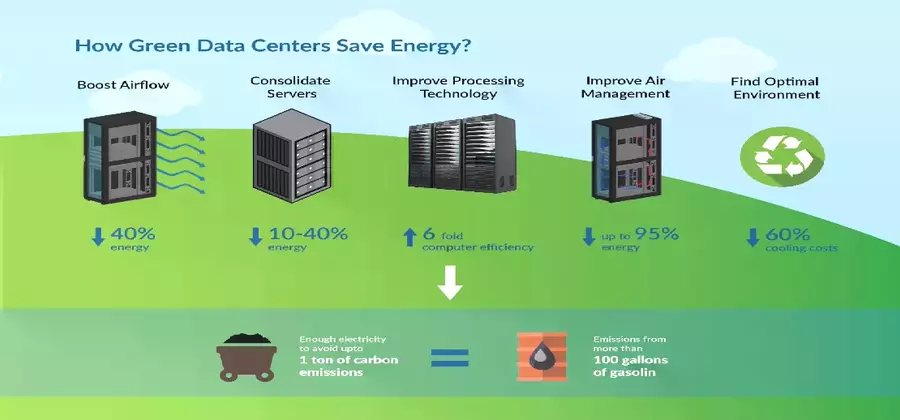Navigating the Carbon Footprint: Understanding the Environmental Impact of ML Engineering Teams
The global community is acutely conscious of the climate crisis stemming from human-induced global warming. To avert catastrophic outcomes, urgent measures are imperative. Many nations have committed to achieving net-zero greenhouse gas emissions by 2050, underlining the critical need for substantial emission reductions.
The surge in AI technology has sparked concerns about its environmental impact, primarily in terms of electricity usage for model training. Notably, training models like ChatGPT-3 and Llama2 has resulted in substantial carbon emissions—502 tCO2e and 539 tCO2e, respectively. To put this in perspective, each is akin to the emissions from a passenger on a one-way flight from New York to San Francisco repeated 500 times.
Working within a machine learning engineering team, I grapple with a pressing question: What is our contribution to carbon emissions through electricity consumption, and how can we minimize it? This marks the beginning of our journey in carbon accounting.
Approaches:
Measuring our electricity consumption and subsequent carbon impact isn't a straightforward task due to the diverse platforms and services we employ. While I won't delve into the technical intricacies, the process broadly involves three methods.
- Provided: Our cloud service provider (CSP) furnishes us with precomputed carbon emission figures.
- Tools: Utilizing software tools like Powermetrics, Nvidia-SMI, and Turbostat, we measure power in Watts, monitoring CPU and GPU compute for laptops and on-premise servers.
- Self-Calculated: When the above methods aren't feasible, we resort to proxy techniques. This entails recording compute duration, estimating chip(s) utilization percentage, and determining the thermal design power (TDP) of each chip type for power consumption calculation. For the latter two methods, power is converted into energy (kWh). Where applicable, Power Usage Efficiency (PUE) of supporting data centres is considered for more accurate energy consumption. Finally, the Grid Emission Factor (in kgCO2e/kWh) of the country or region is applied to calculate greenhouse gas emissions.

Green Computing: Transforming Towards Sustainability
With an enhanced understanding of our carbon footprint, steering our development team towards greener solutions becomes paramount. While the concept of green computing has been around for some time, I propose organizing it into six overarching themes to guide our team through a more streamlined and effective green transition.
Green AI: Nurturing Sustainable Machine Learning
In the realm of artificial intelligence, the concept of "Green AI" emerges as a pivotal paradigm shift towards sustainability. As the environmental impact of AI models comes under scrutiny, the focus on developing and implementing eco-friendly AI solutions gains momentum. This article explores the principles and practices of Green AI, delving into energy-efficient model training, responsible computing, and the quest for environmentally conscious advancements in the field. Join us on a journey to understand how Green AI is reshaping the landscape of machine learning for a more sustainable future.
Green Apps: Paving the Way for Eco-Friendly Digital Experiences
In the era of ever-expanding digital landscapes, the emergence of "Green Apps" marks a significant stride towards eco-conscious technology. This article navigates the realm of sustainable app development, exploring strategies to minimize environmental impact. From optimizing energy consumption to incorporating eco-friendly design principles, discover how Green Apps are reshaping the app development landscape. Join us on a journey to uncover the innovative practices and considerations that make apps not only user-friendly but planet-friendly too.
Green Servers: Cultivating Sustainable Digital Foundations
As the digital landscape expands exponentially, the imperative for sustainability takes center stage with the advent of "Green Servers." This article explores the realm of environmentally conscious server technologies, unveiling strategies for energy efficiency, renewable energy integration, and the broader impact on forging a sustainable digital infrastructure. Join us in uncovering the principles and innovations driving the evolution toward green server solutions, laying the groundwork for a more eco-friendly and resilient digital foundation.
Green Storage: Nurturing Sustainable Data Preservation
In the era of escalating data volumes, the concept of "Green Storage" emerges as a critical pillar in the quest for sustainable information management. This article explores the landscape of environmentally conscious storage solutions, delving into strategies for optimizing energy consumption, reducing electronic waste, and fostering a more sustainable approach to data preservation. Join us as we unveil the principles and practices shaping the evolution of Green Storage, contributing to a greener and more responsible digital ecosystem.
Green Transfers: Sustainable Data Movement in the Digital Realm
In the dynamic world of digital connectivity, the concept of "Green Transfers" takes center stage, emphasizing eco-friendly practices in data movement. This article navigates the landscape of sustainable data transfers, exploring strategies for minimizing carbon footprints, optimizing network efficiency, and fostering a more environmentally responsible approach to information exchange. Join us as we uncover the principles and innovations driving the evolution of Green Transfers, contributing to a greener and more sustainable digital interconnectedness.
Green Templates: Eco-Friendly Blueprints for Sustainable Design
In the realm of digital design and development, "Green Templates" emerge as innovative blueprints for crafting sustainable and environmentally conscious digital experiences. This article explores the concept of sustainable design templates, delving into strategies for minimizing environmental impact, optimizing energy efficiency, and fostering a more responsible approach to digital creation. Join us as we unravel the principles and practices that make Green Templates a driving force in shaping a greener and more eco-friendly digital design landscape.
Conclusion
Summing up key findings, this article emphasizes the significance of integrating sustainability into ML engineering practices. A call to action for a greener, more environmentally conscious future in ML development.

































